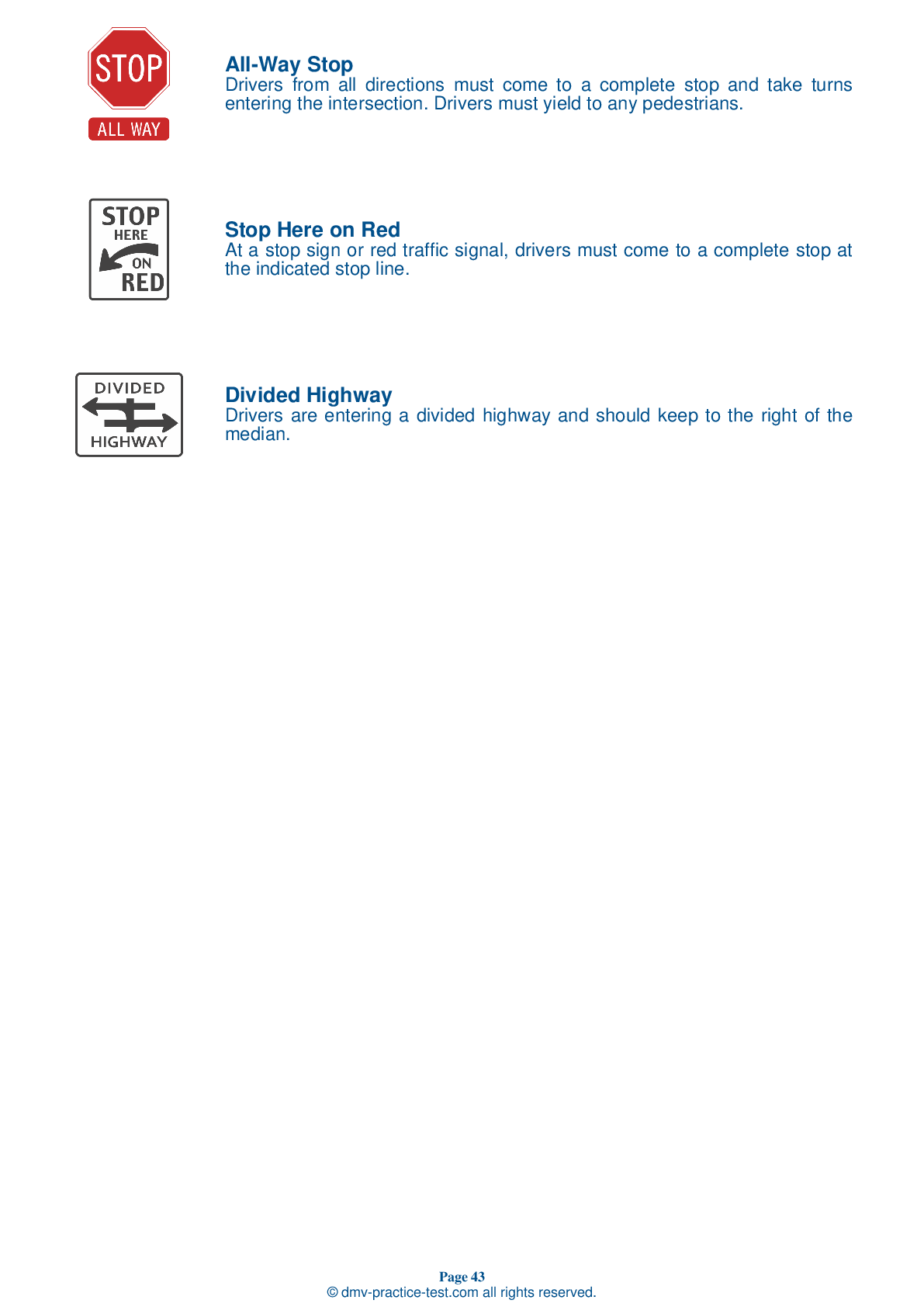FREE Connecticut DMV Practice Test #23 Page 2 of 3
This set of Connecticut DMV practise tests was just updated for January 2025. It includes questions based on the Connecticut Driver Handbook's most essential traffic signs and regulations for 2025. Use actual questions that are very similar (often identical!) to the DMV driving permit test and driver's licence exam to study for the DMV driving permit test and driver's licence exam.
Each practise test question has a hint and explanation to assist you in remembering the concepts. The written component of the official DMV test will include questions about road rules, traffic signs, and driving statutes, as well as information from the Driver Handbook.
To achieve the required passing grade, you must correctly answer 20 of the 25 questions. Take our DMV practise exam to help you prepare for your Connecticut instruction permit or driver's licence.
The DMV exam is available in several languages.
Using any form of testing help will result in an automatic fail, and the DMV may take further action against your driver's licence, so avoid it.
9 . Regarding the steering wheel as a clock face, a driver's left and right hands should be positioned at:
Hands should be comfortably placed on opposite sides of the steering wheel (left hand between 8 and 10 o’clock and right hand between 2 and 4 o’clock). On high-speed roads, this positioning allows drivers to make turns without taking their hands off the wheel.
10 . When driving on packed snow, you should reduce your speed by:
When driving on packed snow, you should cut your usual speed in half. Use snow tires or chains when the roads are covered in snow.
11 . In a work zone:
Do not become oblivious to work zone signs when the work is long-term or widespread. Be aware that traffic patterns in work zones can change daily, including lane shifts or alternating lane closures.
12 . You must yield to a pedestrian using a white cane or guide dog:
Pedestrians who use guide dogs or white canes (with or without a red tip) must be given the right-of-way at all times.
13 . Sudden wind gusts on highways:
While it can create special problems for large vehicles, strong wind can cause problems for all drivers. Wind can lower visibility by blowing dirt and dust into the roadway, but it can sometimes also physically move a vehicle.
14 . What is a potential effect of taking a prescription drug while drinking alcohol?
Legal medications, both prescription and over-the-counter, can impair your ability to drive. They can be particularly dangerous when used in combination with alcohol.
15 . It is illegal for a person 21 years of age or older to drive with a minimum blood alcohol concentration (BAC) of:
For drivers age 21 or older, it is illegal to operate a motor vehicle with a blood alcohol concentration (BAC) of 0.08 percent or higher. Driving while under the influence of alcohol is not only illegal, but dangerous.
16 . To make a left turn, you should:
Where there are no signs or lane markings to control turning, you should turn from the lane that is closest to the direction you want to travel and turn into the lane closest to the one you just left. This way, you will cross the fewest lanes of traffic.
See the exact questions that will be on the 2025 Connecticut DMV exam.
99.2% of people who use the cheat sheet pass the FIRST TIME
LT gives us an insight on how the cheat sheet provided her with all the study questions she needed before taking her test.
Joe initially studied with the handbook and failed his test, he eventually found us online, studied and pass his test the first time around.



